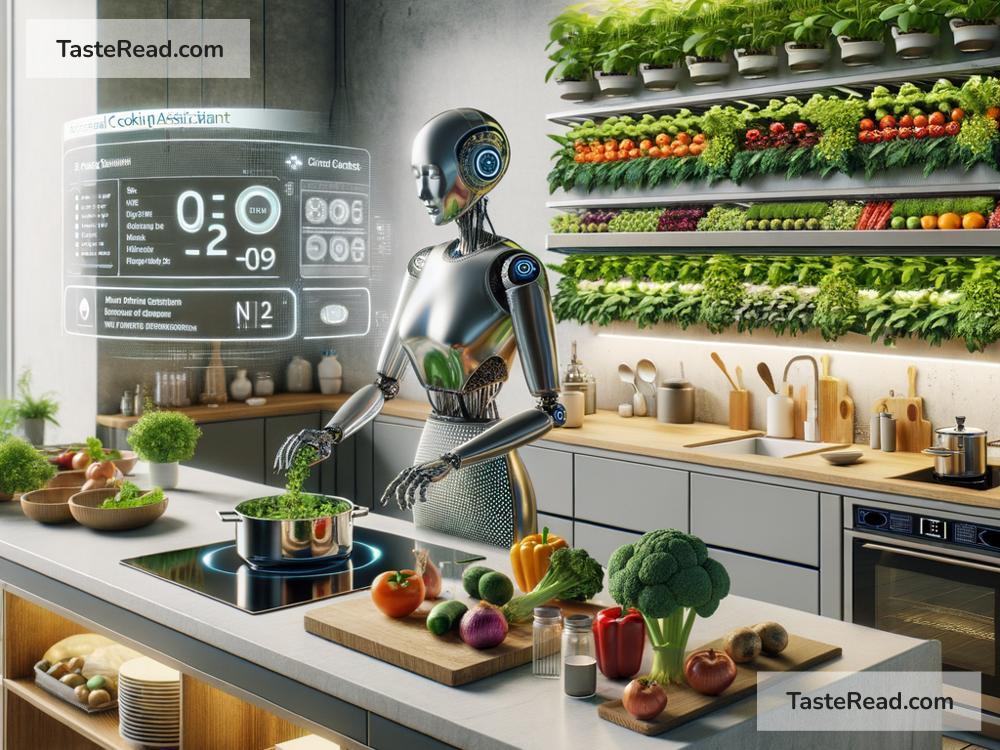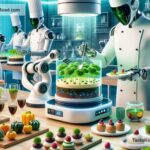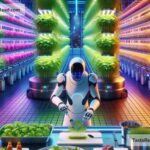The Future of Food: How Technology is Changing What We Eat
Food is one of the most important parts of our lives. It keeps us healthy, brings people together, and shapes cultures worldwide. But as the world grows, we face new challenges, like feeding a growing population, protecting the environment, and making sure everyone has access to good food. That’s where technology comes in. The future of food will likely be shaped by exciting innovations that combine science, engineering, and farming.
Here’s a look at how food and technology might come together to change the way we eat.
Farming with Smart Technology
For thousands of years, farmers relied on simple tools and hard work to grow crops. Now, technology is making farming smarter and more efficient. One big change is the use of smart farming tools, like drones, satellites, and sensors.
For example, drones can fly over a farm to check the health of crops, while sensors placed in the soil can measure how much water and nutrients plants need. These tools help farmers make better decisions, reduce waste, and grow more food with fewer resources. This is especially important as the climate changes and water becomes scarcer.
Another futuristic idea is vertical farming. Instead of growing food on large pieces of land, vertical farms use tall buildings fitted with shelves of crops. With controlled lighting, temperature, and water systems, vertical farms can grow crops all year round—even in big cities where there’s little space.
Lab-Grown Food: Meat Without Animals
Imagine eating a burger that didn’t come from a cow. Sounds strange, right? But this is already possible with lab-grown meat, also called cultured meat. Scientists can grow meat using animal cells in a lab instead of farming or slaughtering animals. By growing meat in a controlled environment, we can reduce the number of animals raised for food and cut down on greenhouse gases produced by traditional farming.
While lab-grown meat is still expensive to produce, companies are working hard to make it cheaper and more accessible. It could be a revolutionary solution for feeding the world without harming animals or the planet.
For people who prefer plant-based options, technology is also stepping up. Innovative brands like Beyond Meat and Impossible Foods are creating plant-based products that taste almost exactly like real meat. Using advanced science and food engineering, they’re changing what plant-based eating looks (and tastes!) like for millions of people.
Personalized Nutrition
Have you ever wondered whether your diet is really the best for you? In the future, food will become much more personalized, thanks to technology. Scientists are currently exploring ways to analyze a person’s DNA, gut health, and lifestyle to recommend food specifically tailored to their needs.
For example, if someone has a genetic tendency to process certain vitamins poorly, a smart device might suggest foods or supplements that can balance out their nutrition. Imagine wearing a smartwatch that not only tracks your steps and sleep but also tells you what’s missing in your diet! Personalized nutrition could help people stay healthier and prevent diseases before they even start.
Food Delivery and Robots
Ordering your favorite meal is easier than ever, thanks to apps. But in the near future, technology might make it even simpler—and faster. Some companies are already testing food delivery drones and robots. Imagine ordering pizza and having a small robot drive right to your door or a drone drop it off at your window!
Additionally, restaurants and factories are using robots to cook and package food. These robots can prepare meals quickly and consistently, reducing human errors and labor costs. One example is robotic arms that slice, dice, and flip burgers perfectly every time.
Reducing Food Waste
Food waste is a big problem. Every year, millions of tons of food are thrown away, even though many people around the world are hungry. Technology is helping us tackle this issue by creating smarter ways to handle food production and storage.
For instance, apps like Too Good To Go connect people with restaurants and stores to buy leftover food at discounts instead of throwing it away. Smart storage systems can also track food expiration dates and send reminders to use certain items before they spoil. In the future, we may see large-scale food waste turned into biofuel or compost using advanced machines.
3D-Printed Food
Yes, you read that right—food made from a printer! 3D food printing is already being tested in places like restaurants and space missions. By printing layers of edible material, 3D printers can create unique food shapes, flavors, and textures.
This technology could be highly useful for people with specific dietary needs, like those who have difficulty chewing or swallowing. Imagine printing soft foods that still look like regular meals!
A Healthier and Sustainable Future
The combination of food and technology holds endless possibilities. From growing crops in vertical farms to printing food or creating lab-grown meat, these innovations could help solve many global problems, like hunger, climate change, and food shortages.
Of course, there are challenges, too. Not everyone may easily accept lab-grown or printed food, and making these technologies affordable for all is a big task. But with time, science and creativity will likely overcome these hurdles.
Ultimately, the future of food is about creating a world where everyone has access to delicious, healthy, and sustainable meals—and technology is the key to making it happen.
What do you think about these futuristic ideas? Would you try food made in a lab or grown on a shelf? Share your thoughts in the comments; we’d love to hear them!


